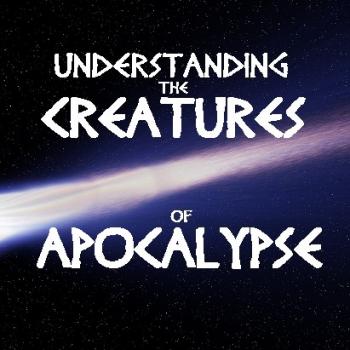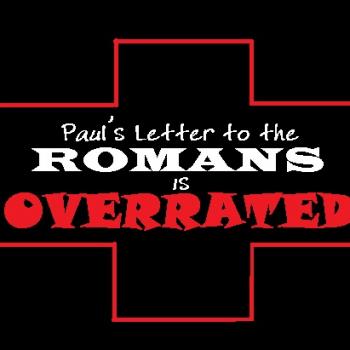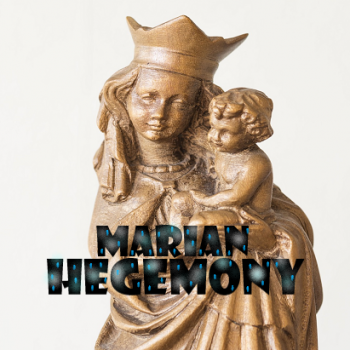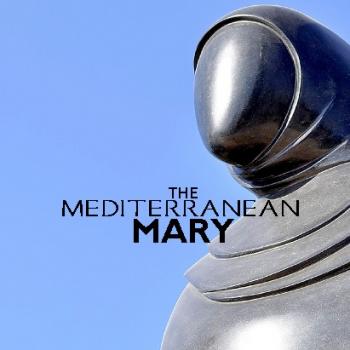
Horror stories fill the pages of Scripture, but none so prominently as the Infancy Narrative of “Matthew.”
Horror movies at Christmas! This year’s remake “Black Christmas” is the just the most recent entry in quite a list. “Krampus.” “Silent Night, Deadly Night.” “Gremlins.” “Jack Frost.” These are just a few cinematic stories, some good, most terrible. Many Christians and even lovers of campy Hallmark Christmas-themed pornography for certain U.S. women family movies complain about this. Why is Halloween horror obnoxiously intruding, inserting itself into the bright and cheerful time of Christmas? Tis the Season for warm and fuzzies!
But even the oldest of all Christmas stories in history was a straight up tale of horror, and I am not referring to Charles Dickens’ ghostly tale, “A Christmas Carol.” I am talking about the horror that is Matthew 1—2.
A Little Christmas Horror
Something horrific happened before Mary came to live with her betrothed, Joseph—
Matthew 1:18
This is the origin of Jesus, Messiah: when his mother Mary was betrothed to Joseph, but before they lived together, she was found with child through the Holy Spirit.
Huh? Where is the horror in that? That doesn’t seem too scary. Scholar John Pilch offers great advice: “STOP and OBSERVE.”
“…she was found with child…”
Americans are not too sharp with what basic grammar calls the passive voice—“was found” is the passive voice. It tells us that someone else discovered Mary was pregnant. This begs the question: who? Who discovered her pregnant? And how did they discover her that way?
The Angel Told Mary, Right?
Perhaps we should ask how Mary, herself, discovered that she was pregnant. I can hear the thoughts of many: “The Archangel Gabriel told here!” But that will not do. We are in “Matthew” here, not “Luke.” As we showed before, neither “Luke” nor “Matthew” were written with the other in mind. Therefore one does not intend to fill in details the other left out. And neither is a 21st century Western biography determined to present precise historical facts. So don’t read “Luke” into “Matthew” please. Read “Luke” in “Luke” and “Matthew” in “Matthew.” To taste the horror of “Matthew,” you must read Matthew 1—2 respectfully.
There is no Archangel Gabriel informing Mary in “Matthew.” So how then did the Matthean Mary discover that she was pregnant? Forget scientific tests or over-the-counter pregnancy tests from the local drugstore. Perhaps it was some time before the Matthean Mary knew, as some time would have to pass before her pregnancy would show.
More importantly than when the Matthean Mary discovered that she was pregnant, is when others, her fellow peasant villagers, discovered this. How did they? When did they? Recall that passive voice—“she was found with child…” That means she was discovered by others.
The Village Bath
Since we must drop any Lukan angelic visit (Luke 1:26-38), wouldn’t the Matthean Mary have discovered she was pregnant simply by missing her period? John Pilch informs us that this explains how her fellow villagers learned of it as well. When ancient Israelite women experienced menstruation they became ritually unclean and required ritual purification (Leviticus 15:19). So Mary will need a mikveh, a ritual bath that will make her clean again. Where will she go for that?
As we already explored the Matthean Mary is native to Bethlehem, unlike the Lukan Mary, who is native to Nazareth. Likely the historical Mary always hailed from Nazareth. But whichever tiny village we are talking about, are the homes in either first century place equipped with bath tubs and plumbing? John Pilch shatters our ignorant fantasies—just as there is only one village oven in these places, there is only one village bath. So every month all of the menstruating women must go, together, and have their mikveh.
Village Gossip
Pilch and his colleagues in the Context Group explain that for all Mediterranean peoples, everyone’s business is minding everyone else’s business. There is no privacy in this world. When Mary failed to come that month to the village bath—or when she did show up and tried to fake it!—she was discovered. According to Pilch and friends—and sound logic—it was by one of these two ways that her pregnancy was discovered. Recall what we said last time about “Matthew” being a high context document. The evangelist didn’t feel the need to spell everything out—a considerate author to his ancient audience, he felt they already had this auxiliary background information, so much is left unsaid. Sorry 21st century Christians!
So the women at the bath know. Then their mothers would hear of it. Eventually their husbands would learn about this—the weakest emotional bond in the Middle East is between spouses because marriages are arranged. During all of this, prepubescent children overheard it. In Jesus’ world, children like these were allowed everywhere in the village. They enter homes, listen, and report back to their parents any dirt they heard. Biblical children are the village gossip network, and news of Mary’s shameful pregnancy would spread like wildfire.
This helps explain a poorly understood and highly sentimentalized and recontextualized saying of Jesus. Since in this culture gossip spreads by way of children, the Matthean Jesus says,
Matthew 19:14
Jesus said, “Let the children come to me, and do not prevent them…”
John Pilch and friends explain what Jesus actually meant: “We have nothing to hide. Let the children blab all they want to their parents.”
And who would be the last person in the village to discover Mary’s shameful pregnancy? It would be the ridiculed Joseph—now seen as village idiot and cuckold.
Joseph Learns of the Horror
Joseph is humiliated and the village is on the precipice of plunging into blood feud. Everyone knows Joseph did not impregnate Mary. The reason is because he makes no public claims. The ancient Mediterranean world of the Bible is far removed from blood tests and DNA. A boy becomes a son only when another, older male proclaims him as his son (Mark 1:11 = Matthew 3:17 = Luke 3:22. Cf. John 1:32-34). Sometimes such a claim was contested (Mark 1:12-13 = Matthew 4:1-11 = Luke 4:1-13). In the Matthean narrative, everyone knows Joseph is not the father of Mary’s unborn child because Joseph remains silent.
If you are aware of the honor killings that have always gone on in that part of the world, and you are following the story closely checking any pious Christmas sentiments as you read, by now you should realize that Matthew 1—2 is a horror story. The Bible is filled with such horror stories. This story is one of many horror tales, but our Christmas observances dull this and obscure the horrific aspects. This is a tragic story that should chill your blood as you read it. Drop the fantasyland nonsense of The Protoevangelium of James and taste the horror of Mary’s plight.
The Spirit or a spirit?
Consider again the beginning of this horror story—
Matthew 1:18
This is the origin of Jesus, Messiah: when his mother Mary was betrothed to Joseph, but before they lived together, she was found with child through the Holy Spirit.
Pilch and his Context Group friends explain that this is filled with poor translation. It would be better rendered this way—
Matthew 1:18
This is the origin of Jesus, Messiah: when his mother Mary was betrothed to Joseph, but before they lived together, she was found with child [through a holy spirit].
That last little bracketed section “Matthew” adds so that his audience, Mediterranean honor-shame people, won’t panic. The author is basically saying, “Hang tough! It looks horrible, but things are going to turn out fine!” This helps with the horror—it is hopeful.
Now, if you read this passage in most English translations, you will see that it is the Holy Spirit. But since the article “THE” is missing in the Greek manuscripts we have of “Matthew,” it cannot be THE Holy Spirit, can it? We are talking rather about A spirit, not THE Spirit. And that affects what follows. We therefore ought not to capitalize holy or spirit. So it should be a holy spirit.
Keep in mind that theology and doctrine do develop and that anonymous author we call “Matthew” is writing centuries prior to the Council of Constantinople in 381 CE. He is not conceiving the Third Person of the Most Holy Trinity. Instead, he is referring to a holy spirit or wind.
The Spirit World and Reproduction
The Middle Eastern world presents a cultural consensus reality strange and alien to the one we share in the West. In this biblical world, in the air blowing all around people there, teems uncountable other-than-human persons called “spirits.” Among these are good, wicked, and mischievous spirits.
“Matthew” was written long before microscopes, ages before we learned the truth about sperm and egg, way before human production was studied scientifically. “Matthew” basically tells his audience: “Don’t worry about Mary’s early, shameful pregnancy. It was a good spirit that did to her. Things will turn out fine.”
Joseph: Village Idiot and Shaman
Moving along with the story,
Matthew 1:18-19
This is the origin of Jesus, Messiah: when his mother Mary was betrothed to Joseph, but before they lived together, she was found with child [through a holy spirit]. Joseph her husband, since he was a righteous man, yet unwilling to expose her to shame, decided to divorce her quietly.
How can we understand the Matthean Joseph as “a righteous man”? Pilch and friends explain that this should be done in a culturally-informed way. Pilch explains that “righteous man” refers to one type of Israelite holy man, or what anthropologists call a shaman. In the Israelite tradition, holy persons or shamans are called either şaddiq or hasid. Both these types long to honor the God of Israel and obey every single one of the 613 commandments of Torah. Additionally, they can and do communicate with the spirit world, like all shamanic figures.
So “Matthew” is telling his audience a great deal by saying that Joseph is “righteous.” This holy man, whether a şaddiq or hasid, cannot accept a child whom he knows cannot be his. This is because he would then be a thief (Deuteronomy 5:19; Exodus 20:15; Exodus 21:16). Joseph cannot do this. But what can he do?
If he exposes Mary publically, then her father and brothers will have to kill her. The usual method is strangling or decapitation, but “stoning” is the prescribed method. The stain of shame must be blotted out—all memory of Mary erased from the village. But “Matthew” tells us that Joseph does not want this.
Addiction to Ancient Ideas about Reproduction
Keep in mind that it was only within the last two centuries that we discovered what sperm really are, and human ovum. Most people throughout all time believed that during sexual intercourse, the human male planted into the woman—seen as a field—a fully formed tiny human being. This miniature seed of a human being is called in Latin, homunculus. According to this idea, females contribute nothing to sexual reproduction except for passive reception. The male does everything.
If you would like a contemporary example of the disastrous effect this has had on the Church’s official position of human sexuality, just read up on how women are understood by Pope John Paul II, in his “Theology of the Body.”
So biblically speaking, women do nothing except hold the growing seed like Mother Earth does. Understand that and you will see why it is such a horrific problem being a barren woman in Scripture. Seen in this prescientific way, the only thing the female has to do is hold onto the seed. And it seems that she can’t even do that right! This is how the ancients understood conception and pregnancy in the ancient world. Man does all the work and has all the responsibility.
Biblical Weddings
How do you imagine an ancient Biblical wedding ceremony and celebration? Watch yourself and see how many of your Western ideas plop in to fill up gaps in your understanding, working hard to construct a scenario comfortable to your own 21st century Western cultural setting. Maybe you’ve been to a Jewish wedding—but that won’t help you understand a Biblical wedding. The Wedding at Cana, or the one had by the Matthean Joseph and Mary, is alien to 21st century Jewish weddings, or even Jewish weddings of the sixth century CE.
So how did ancient Biblical weddings happen? Once a betrothed girl has her first period she becomes ready for the occasion. Sometime after that, on a set special day, the groom, ideally her patrilateral first cousin. He is accompanied by a team of other males, close friends, cousins, and brothers. They bring her out of the house of her father, usually the groom’s uncle, and into the groom’s father’s house. All biblical marriage is patrilocal.
Consider Peter’s mother-in-law living in his father’s Jonah’s house. Peter’s mother-in-law is likely Peter’s aunt.
This helps explain what was meant to happen, and what eventually did happen, to Mary. “Matthew” doesn’t explain any of this—he expects his audience to be very familiar with it! Joseph needs to go to Mary’s father’s house. He must then bring her into his father’s house. And the whole village will come to take part in a celebration that can last weeks.
The Magic Moment at the Biblical Wedding
But let’s not get ahead of ourselves. At the beginning of this celebration, the couple must have sexual relations. So that first night they disappear, and then emerge showing everyone a blood-stained sheet. This proves the physical virginity of the bride and safeguard’s the honor of her father and brothers. The parents of the bride keep the blood-stained sheet as the token of physical virginity.
And so we read in the Torah—
Deuteronomy 22:13-19
If a man takes a wife and he goes into her, and then he tires of her and comes to spurn her, and decides to charge her with shameful conduct and he brings an evil name on her by saying, “I took this woman, but when I came near her I did not find the tokens of virginity,” then the father of the young woman and her mother shall take out the tokens of her virginity and bring it out to the elders of the city at the gate.
There the father of the young woman shall say to the elders, “I gave my daughter to this man in marriage, but he has come to dislike her, and now accuses her of misconduct, saying: ‘I did not find evidence of your daughter’s virginity.’ But here is the evidence of my daughter’s virginity!” And they shall spread out the cloth before the elders of the city. Then these city elders shall take the man and whip him, and fine him one hundred silver shekels, which they shall give to the young woman’s father, because the man brought an evil name upon a virgin in Israel. She shall remain his wife, and he may not put her away all his days.
The Horror of No Proof
But what happens if, during such an accusation and crisis, you cannot produce the blood-stained sheet?
Deuteronomy 22:20-21
But if this charge is true, and the tokens of the young woman’s virginity were not found, then they shall bring out the young woman to the door of her father’s house and there the men of her city shall stone her to death, because she has wrought folly in Israel by playing the harlot in her father’s house. Thus shall you purge out the evil from the midst of you.
Pilch and the Context Group explain that in “Matthew,” Joseph realizes when the special day comes to bring Mary into his father’s house, it’s bad news. When he takes Mary up into the private place away from the celebration, he will be unable to produce a blood-stained cloth. Mary’s shame, already known, will be inescapably exposed. Likely, she will fall victim to honor killing, a cultural tradition still going on to this day in the Middle East, observed by traditional Muslims and Christians there. This is a horror story, folks.
Being Honest with the Origins of Christmas
Sentimental Christians may not like horror associated with their Christmas observances, but being honest with the oldest Christmas story we have means admitting the horror in Jesus’ shameful origins. When you read this story during Advent or Christmas, when you pray your Joyous Mysteries, leave some room for the horror.
How does this horror get resolved? We will deal with that in the following post…












